Articles de la rubrique "Bookkeeping"
How to Use the QuickBooks Online Undeposited Funds Account
It will take you to the bank deposit screen where you can uncheck the checkbox for the payment you wish to remove, and then click Save and close. The payment will automatically go back to the Undeposited Funds account. Next, select the account to which the funds will be deposited and add the payments to the deposit. Make sure to verify the details and allocate the funds to the appropriate income or expense accounts. Take your time to verify the details before finalizing the clearing of undeposited funds to maintain the integrity of your accounting records.
Use the Receive payment form when your customer pays you for an invoice and the Sales receipt form when you receive immediate payments. The importance of this step becomes even more apparent in the next screenshot. As we know, reconciling is an integral part of your books and keeping them accurate. When it comes time to reconcile an account, you have your bank statement in one hand and QuickBooks Online in another.
Perhaps you forgot to record a prior deposit or the check was lost and never deposited. You’ll also notice that when you click on the deposit, it expands and you can choose to edit. This is the convenience of this special account I know you’ll learn to love. Learn how to put payments into the Undeposited Funds account in QuickBooks Desktop. Maintaining good record-keeping practices and conducting regular audits can help in preventing and addressing duplicate transactions effectively.
- This is the convenience of this special account I know you’ll learn to love.
- These funds serve as a temporary holding account and allow for grouping multiple payments together before depositing them into the designated bank account.
- Cleaning up undeposited funds in QuickBooks Online is essential to ensure accurate accounting records and maintain financial transparency.
- Before initiating the clearing process, it is crucial to review the undeposited funds account in QuickBooks Online to identify all pending payments and receipts awaiting deposit.
Including Additional Checks Into Your Deposit
Here’s how to put payments into your Undeposited Funds account. If a customer paid with a check or their payment comes with a reference number, you can record that information in QuickBooks as well. If you see a balance in Undeposited Funds on your balance sheet, you need to investigate. Again, make sure you are selecting Undeposited Funds from the “Deposit To” drop-down menu, and save the transaction.
Step 3: Match Deposits to Invoices and Payments
Choose your customer from the drop-down menu and their open invoice will automatically show up on the list. This process involves identifying the undeposited funds, verifying the reasons for their deletion, and making corresponding adjustments in the account. It is insurance expense definition crucial to maintain a clear trail of documentation to support the deletion, such as notes detailing the reason for the adjustment and any approvals required.
Reconcile Your Accounts
It’s possible the deposit was posted straight to an Income account rather than matched to payments received. Also check for two separate deposits for $1,675.52 and $387, respectively. If you added a payment to a deposit by mistake, you can remove that payment easily by clicking on the deposit or amount field in the deposit entry line in the Deposit Detail report.
It helps to reconcile any inconsistencies and prevent errors in financial reporting. Cleaning up undeposited funds in QuickBooks Online is essential to ensure accurate accounting records and maintain financial transparency. By following the step-by-step methods outlined in this article, you’ll gain a clear understanding of how to manage undeposited funds effectively, ensuring the accuracy of your financial data.
What is the Undeposited Funds Account in QuickBooks?
Well, get ready to learn something new and take a thorough look at Undeposited Funds. Learn how to use the Undeposited Funds account in QuickBooks Desktop. Learn how to use the Undeposited Funds account in QuickBooks Online. You don’t need to do this if you’re free bookkeeper certification practice exams downloading transactions directly from your bank.
For this, we have a detailed guide on how to set up the products and service list in QuickBooks Online. From the Sales receipt form, you’ll need to provide the requested details. Suppose we recently received an upfront payment of $150 in cash from Robert Allard for an A/C repair service. When you immediately receive a cash or a check for a sales transaction without having created an invoice, then you must use the Sales types and properties of assets receipt form to record the check and revenue. Accurate record-keeping is essential to ensure that the deletions are properly accounted for in financial reports and compliant with regulatory requirements.
Catégorie: Bookkeeping | Tags:
What Is Project Accounting? Principles, Methods & More
Documentation is required to record the project costs that are incurred throughout the project. Under ASC 605, companies could use the completed contract method, recognizing revenue only when https://pmrgid.com/video/displayresults/0?pattern=finance&rpp=0&sort=0&ep=&ex= a project was fully complete. This was intended to be utilized when reliable estimates could not be made, on very short jobs, or when there was a risk the project wouldn’t be completed.
- It is a crucial yet complex part of financial reporting in the construction and industrial sectors, in which projects often extend over long periods.
- Moreover, in case you spot any potential problems with your project, it’s crucial to take action right away.
- According to Project Accounting Australia, project accounting is “a specialized form of accounting that focuses primarily on project delivery”.
- In diligence, by looking back at the specific costs, it can be determined exactly how conservative each month was, and revenues can be adjusted to the periods they relate.
- Having a single source of truth for all project financials saves time for many critical tasks, like data management and strategic advising.
- On the other side, clients would either have their own fixed budget or ask you to give a rough estimate of how much a project is going to cost.
Essential Financial Management Techniques
It’s an active form of project management that allows key decision makers to identify the reasonable benefit of a project and monitor the costs of delivering it in real time. Project cost or project budget is where https://www.zelezo.net.ua/news.php?readmore=1578 fits in, with a focus on the financial management processes. What’s more, project accounting is extremely valuable when it comes to estimating expenses for future projects.
Financial Accounting and Auditing
The cost-to-cost method may be used to calculate the revenue for each period the project is broken down into, which could be weeks, months, or years. Scope creep is what you call a project correctional https://wikigrib.ru/raspoznavaniye-gribov-89537/ phase, a stage common with poorly planned projects with the sole aim of bringing the project back on track. This is the stage where you create or make all the plans and allocations for the project.
Step 5: Set up real-time expense and time-tracking
With project forecasting, construction companies were better prepared to adjust their budgets accordingly. Your choice of method depends on your business and accounting standards, such as International Financial Reporting Standards (IFRS) and Generally Accepted Accounting Principles (GAAP). While Productive offers insights into both invoiced and recognized revenue, its main benefit is in enabling you to track and forecast your revenue through the Resource Planning feature. This can be done with cash or credit on the delivery of goods or services. This is commonplace in retail stores but can also apply to project deliverables. If you are unsure if your current computer or internet access allows you to complete your online learning with us, please contact us before applying to enrol.
- The financial performance of a project is not just about the revenue numbers.
- Wendy is a Chartered Professional Accountant (CPA) and Certified Management Accountant (CMA) with over 10 years of experience as a finance and accounting leader.
- Take your project and resource management to the next level with our AI-driven platform.
- Since $500 of revenues were recognized through period four, an incremental $200 was recognized in period five.
- Project-based accounting helps track every dollar spent on the office complex.
The Beginner’s Guide to Project Accounting
Where executed correctly, project accounting undoubtedly improves the financial performance of every single project you take on. Project accounting and financial accounting are two different types of accounting methods that follow the same accounting fundamentals. Typically, project accounting is used by Professional Services Organizations (PSOs) or consulting firms that use an accrual-based accounting method. This typically means these organizations are over $5M in annual revenue (otherwise organizations may use the cash-based accounting method).
Tip #1: Set the budget for the project
They also prepare financial reports specific to each project, which lets managers make data-driven decisions that drive project success. The benefits of project accounting are clear, but many cannot be achieved without the proper tools. ProjectManager is work and project management software that captures real-time data for more insightful decision-making. Organize costs and resources and monitor them in real time to better manage your budget and deliver success to your stakeholders. Without having your team register time every day, you’ll have no idea if the project is making headway and won’t be able to calculate real-time cost.
Project Accounting Software: Types and Key Features
Some courses require you to have studied at a particular level prior to enrolling. Whether courses are delivered online, on paper or a mixture of both, there may also be components such as workshops, noho marae, work experience and practicum to participate in. By following these steps and exploring the plethora of provided topics, you can transform your academic experience into a fulfilling and insightful exploration of the accounting world.
Catégorie: Bookkeeping | Tags:
What the Percent of Sales Method Is and How To Use It

Learn how to use the sales revenue formula so you can gauge your company’s continued viability and forecast more accurately. With a revenue of $60,000, she’s not running a corporation, but she should still expect to run into a small amount of bad debt expense. By looking over her records, she finds that for the month, her credit purchases come to $55,000 (with $5,000 cash). Liz’s final step is to use the percentages she calculated in step 3 to look at the balance forecasts under an assumption of $66,000 in sales. Next, Liz needs to calculate the percentage of each account in reference to her revenue by dividing by the total sales. Most businesses think they have a good sense of whether sales are up or down, but how are they gauging accuracy?

How much are you saving for retirement each month?
- Any fixed expenses — like fixed assets and debt — can’t be projected with the percent of sales method.
- Quickly surface insights, drive strategic decisions, and help the business stay on track.
- Those percentages are then applied to future sales estimates to project each line item’s future value.
- But you’re not done yet because you can have it apply the changes to the entire column when you update numbers.
- At Finance Strategists, we partner with financial experts to ensure the accuracy of our financial content.
- We’ll use her business as a reference point for applying the percent of sales method.
To determine her forecasted sales, she would use the following equation. The Percentage of Net Sales Method works by assigning a cost to each item in the ending inventory equal to the percentage of net sales realized from that item during the period. When an item is sold, it is given a cost equal to its assigned percentage multiplied by the total net sales for that period. Just like weather forecasters sometimes get it wrong, the percentage of sales method also has limitations. Determine the balances of the line items and calculate their percentages relative to your sales. It lets you look at past sales to make smart predictions for the future.
- Here are some of the reasons the percentage-of-sales method might not be for you.
- By looking over her records, she finds that for the month, her credit purchases come to $55,000 (with $5,000 cash).
- This helps businesses get a sense of their short-term financial outlook.
- Frank had a holiday hit selling disco ball planters online and he wants to know what his expenses and assets will look like if sales keep going up.
How to Use Regression Analysis to Forecast Sales: A Step-by-Step Guide
- But, using it along with other techniques can provide an even clearer picture of your business’s financial health.
- Plus, you’ll get some tips for good practices for your business.
- Especially when it comes to creating a budgeted set of financial statements.
- There are five basic steps to the percentage of sales method formula.
- The balance in this account will always be a function of a predetermined percentage of credit sales when the net-sales method is used.
- Then, they can utilize their accounting documents to find the figures.
- This data encompasses sales and all business expenses related to sales, including inventory and cost of goods.
He would then apply those percentages to $400,000, rather than the $250,000 from this year. Here are some of the https://www.bookstime.com/articles/financial-statements-for-banks reasons the percentage-of-sales method might not be for you. The best part of this method is it doesn’t need loads of data to work, just the prior sales and a calculator (or software, if you want to make life easier). It’s also useful for risk management as it helps anticipate any financial challenges on the horizon, giving companies enough time to change course or correct any errors. That’s what we’ll cover in this guide to the percentage-of-sales method.
Easy to compare across businesses
The percentage-of-sales method is used to develop a budgeted set of financial statements. Each historical expense is converted into a percentage of net sales, and these percentages are then applied to the forecasted sales level in the budget period. For example, if the historical cost of goods sold as a percentage of sales has been 42%, then the same percentage is applied to the forecasted sales level. The approach can also be used to forecast some balance sheet items, such as accounts receivable, accounts payable, and inventory. The percentage-of-sales method is a financial forecasting model that assesses a company’s financial future by making financial forecasts based on monthly sales revenue and current sales data. The percentage of sales method definition refers to businesses’ forecasting tools to predict multiple liabilities, expenses, and assets based on their sales data.
There are several advantages to using the percentage-of-sales method. First, it is a quick and easy way to develop a forecast within a short period of time. And second, it can yield high-quality forecasts for those items that closely correlate with sales. The percentage of receivables method is similar to the percentage of credit sales method, except that it looks at percentages over smaller time frames rather than a flat rate of BDE.

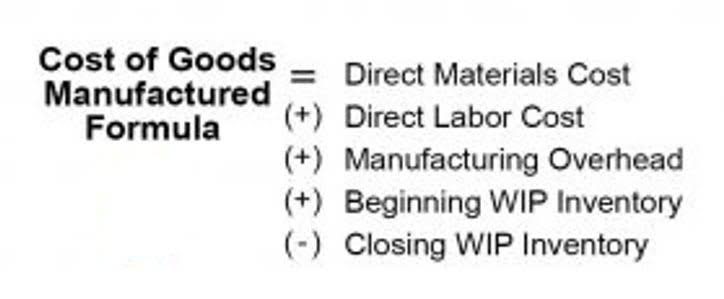
Because the percentage-of-sales method works closely with data from sales items, it’s not the best forecasting method for things like fixed assets or expenses. When you can quickly create sales forecasts, you can adapt to sudden storms. Leverage the percentage of sales method to get a clear vision of your percentage of sales method formula financial future so you can map strategies that work.
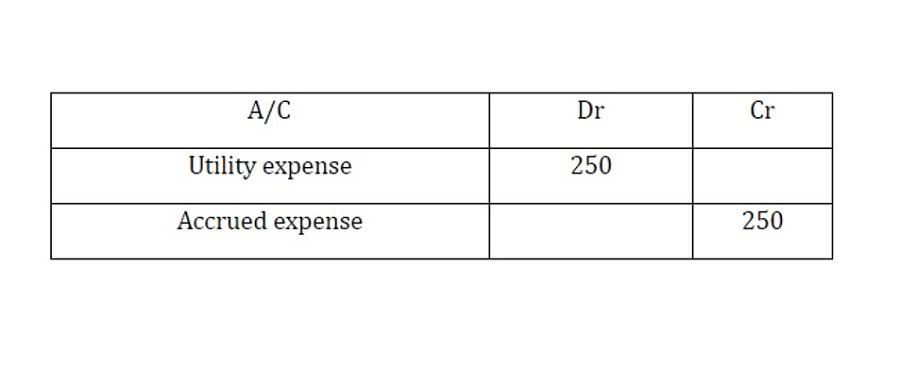
Mastering Sales Percentages for Success
It is also important to establish controls and procedures to prevent the manipulation of https://www.instagram.com/bookstime_inc sales figures. Additionally, it is recommended that companies periodically review their inventory costing methods to ensure that the Percentage of Net Sales Method continues to be the most appropriate for their needs. Based on this data, the debit to the uncollectible accounts expense is 2% of net credit sales of $1 million, or $20,000.
Catégorie: Bookkeeping | Tags:
What Is Ecommerce? The Complete Guide To Online Selling 2024
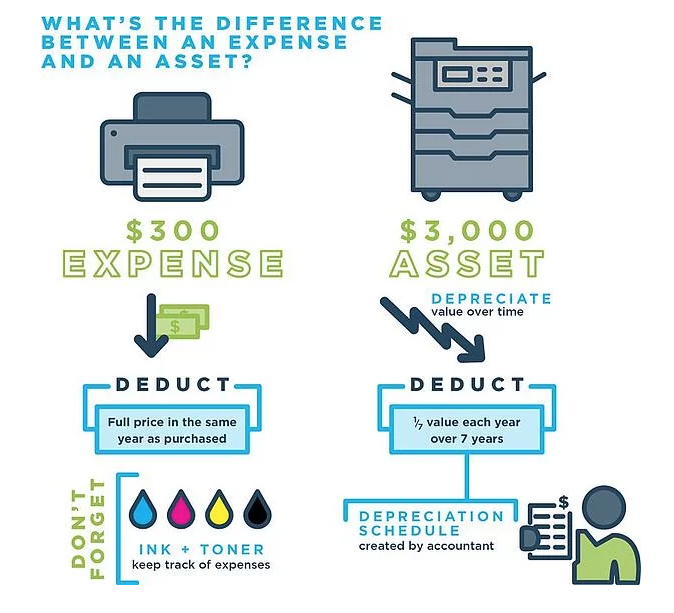
You’ll have to pay for the other great guys that you might prefer. If you’re into spending more for the best, you can reach out to an expert to customize a theme for you or design one from scratch.. BigCommerce falls short here with only a fraction of the app store offerings as its competitors. If you need an app that isn’t already built for Bigcommerce, you’re out of luck idle time vs overtime in cost accounting or will have to hire someone to build it for you.
Built-in security measures and automatic updates ensure your online store is always running on the latest software, including security updates. The right ecommerce platform will also offer features to help you manage your business and finances. This includes sales reporting and analytics, sales tax calculation, and integration with accounting software. AI is transforming how ecommerce platforms operate, making them smarter and more responsive to both merchant and customer needs.
- Pricing for Adobe Commerce is quote-based, which means you’ll need to talk to a customer support representative about your needs before getting an estimate.
- The best platforms have app stores with hundreds of options to choose from.
- Its website contained thousands of products and tons of integrations, making content management exhausting.
- You’ll learn which platform meets your needs, performs the best, and gives you value to dominate your niche.
- Tiered pricing starts at 2.59% plus 49 cents per transaction using Braintree; otherwise, whatever fees your chosen payment processor charges.
Find the right ecommerce platform for your business model
However, you might not need those extensions, and there are good free themes. You’ll still need to invest in WooCommerce hosting, so factor this into your budget. Shift4Shop doesn’t do as well as BigCommerce and Shopify despite being older than they are and the reason is clear. Although there is a nice onboarding video when you log into your inventory turnover ratio analysis dashboard, the whole operation is hard to figure out; the builder is not very visually appealing.
Ecommerce, short for electronic commerce, refers to the buying and selling of goods and services over the internet. It involves a transaction between two parties, usually a business and a consumer, where the payment and delivery of products or services are conducted online. In order to be competitive, ecommerce brands need to have robust return policies and customer service systems in place to handle customer inquiries and complaints. This can be challenging, especially for businesses that sell complex or technical products, or for small businesses with little or no staff. An ecommerce platform is a service that allows you to make money online through your own website.
You’re our first priority.Every time.

You can also add services like local delivery and take advantage of the Shopify Fulfillment Network. Similarly, understanding whether your business primarily serves consumers (B2C) or other businesses (B2B) can significantly influence your choice of an ecommerce platform. SEO tools, email marketing tools, social media integration, and customer review functionality will help you develop an ongoing marketing strategy. Shop Pay, for instance, increases checkout speed by four times. Shopify also offers simple integrations with more than 100 payment gateways, so you can offer the most relevant payment options for your audience, no matter where they are in the world. Volusion makes it easy to integrate with over 30 payment gateways and provides essential tools for creating an online store without unnecessary complications.
Compare the best ecommerce website builders to find one that fits your needs. If you want to sell products online, you’ll find the right platform on this page. Self-hosted or non-hosted ecommerce platforms require merchants to use their own server space or pay to rent space from a hosting provider.
Most users have reported it slowing down as they get more products and customers. The templates they have are more industrial, but they feel outdated. Also, customizing the store takes adjusted gross income a lot of time to understand and get used to except for experienced users because there’s no drag-and-drop functionality.
Save on Storefront Costs
The best platforms have app stores with hundreds of options to choose from. All plans include a custom domain (free for one year), customer accounts, unlimited products, abandoned cart recovery, the ability to sell on social channels, and ad vouchers. Using these, you can connect your store with print-on-demand providers, dropshipping suppliers, fulfillment centers, and more. You can use apps to manage products and inventory, streamline your operations, generate more traffic, optimize your conversion rates, etc. A good e-commerce platform will be user-friendly, simplifying web design with things such as ready-made templates and drag-and-drop builders.
Since a lot of B2B is service-based, such as accounting or marketing, this keeps options open. Dropshipping can be an appealing business model for small business owners in the e-commerce space because it removes the need to manage inventory yourself. BigCommerce caters to this space with its ready-made database of dropshipping suppliers.
Catégorie: Bookkeeping | Tags:
6 1: Introduction to Variable Costing Analysis Business LibreTexts
The marginal cost will take into account the total cost of production, including both fixed and variable costs. Since fixed costs are static, however, the weight of fixed costs will decline as production scales up. Since variable costs are tied to output, lower production volume means fewer costs are incurred, which eases the cost pressure on a company — but fixed costs must still be paid regardless.
As a consultant, you’ll be spending most of your time dealing with a company’s P&L (or the income statement). Because your job is to identify revenue or savings that will drop to the bottom line. And as we’ve already established, cutting variable costs (i.e. outsourcing, replacing parts, optimizing processes) is much easier than cutting fixed costs. You’ll be dealing a lot with these costs throughout your time as a consultant. So get familiar now with how these costs impact a business, and how a variable-cost-based business model differs from a fixed-cost-based business model. One of those cost profiles is a variable cost that only increases if the quantity of output also increases.
This can make it somewhat more difficult to determine the ideal pricing for a product. In turn, that results in a slightly higher gross profit margin compared to absorption costing. One of the essential limitations of variable costing is that it does not comply with Generally Accepted Accounting Principles (GAAP) for external financial reporting or financial statements. It represents the variable manufacturing cost incurred for each unit produced or for each unit of service provided. It’s essentially the cost that varies with changes in production or activity levels. Let us see one more example to calculate the total variable cost and its dependency on quantity.
Based on our variable costing method, the special order should be accepted. Some of the most common variable costs include physical materials, production equipment, sales commissions, staff wages, credit card fees, online payment partners, and packaging/shipping costs. For example, if you have 10 units of Product A at a variable cost of $60/unit, and 15 units of Product B at a variable cost of $30/unit, you have two different variable costs — $60 and $30.
Total variable cost equals the quantity of output into variable cost per output unit. If Amy were to shut down the business, Amy must still pay monthly fixed costs of $1,700. If Amy were to continue operating despite losing money, she would only lose $1,000 per month ($3,000 in revenue – $4,000 in total costs). Therefore, Amy would actually lose more money ($1,700 per month) if she were to discontinue the business altogether.
- After you have determined the average for each variable expense, add a buffer to it.
- Therefore, a company can use average variable costing to analyze the most efficient point of manufacturing by calculating when to shut down production in the short-term.
- Public companies are required to use the absorption costing method in cost accounting management for their COGS.
- This refers to the quantity of goods manufactured or the level of service provided.
- Some of the most common variable costs include physical materials, production equipment, sales commissions, staff wages, credit card fees, online payment partners, and packaging/shipping costs.
Compare your actual expenditure for each variable expense to the budgeted amount. Look for the areas where the expenditure went over budget or under budget for each expense category. Variable costing offers several key concepts and highlights, making it an important apparatus for internal decision-making and performance evaluation. Over 1.8 million professionals use CFI to learn accounting, financial analysis, modeling and more. Start with a free account to explore 20+ always-free courses and hundreds of finance templates and cheat sheets. Apps like PayPal typically charge businesses per transaction so customers can check out purchases through the app.
Variable Costing in Financial Reporting
A company produces 1000 boxes at an average cost of production of one unit is $20. For example, raw materials may cost $0.50 segmentation per pound for the first 1,000 pounds. However, orders of greater than 1,000 pounds of raw material are charged $0.48.
Absorption Costing vs. Variable Costing Example
Unlike absorption costing, variable costing doesn’t add fixed overhead costs into the price of a product and therefore can give a clearer picture of costs. By assigning these fixed costs to cost of production as absorption costing does, they’re hidden in inventory and don’t appear on the income statement. A variable costing income statement is a financial report in which you subtract the variable expenses from revenue, resulting in a contribution margin. The contribution margin is the incremental profit earned when a product’s sales exceed its variable costs. The income statement we will use in not Generally Accepted Accounting Principles so is not typically included in published financial statements outside the company. This contribution margin income statement would be used for internal purposes only.
Variable costing focuses more on short-term decision-making because it avoids fixed manufacturing costs. For long-term strategic decisions, absorption costing may give a more accurate picture of overall costs and productivity. To do this, divide the total variable cost for that category by the number of units produced. This refers to the quantity of goods manufactured or the level of service provided. It’s the measure of production or activity to which variable costs are linked. To utilize this equation, you must determine the variable cost per unit (VCU).
Variable Cost Explained in 200 Words (& How to Calculate It)
High variable cost businesses primarily focus on increasing their pricing power (think Coach). For each handbag, wallet, etc. that Coach produces, it incurs a variable cost. To maximize each unit of production, Coach has branded its products as a luxury item and charges a premium for each unit of production. High prices, versus high volume at a lower price, is how Coach maximizes profitability. While it usually makes little sense to compare variable costs across industries, they can be very meaningful when comparing companies operating in the same industry. They denote the amount of money spent on the production of a product or service and are among the most important analyses a business (or consultant) can run.
The firm’s specific needs, objectives, and reporting needs should guide the decision between variable costing and absorption costing. Many businesses employ both techniques to grasp their cost structures and profitability for various reasons fully. Variable costing focuses on calculating the costs that vary with changes in production levels. Cost-volume-profit (CVP) analysis is a tool frequently related to variable costing. It helps businesses understand how changes in sales volume will affect their profits. If Amy did not know which costs were variable or fixed, it would be harder to make an appropriate decision.
While determining the annual average for the variable expense, instead of looking into the last 12 months’ figures, take into consideration the average of 3 years’ worth of expenses. This will help you account for anomalies that may impact your variable expenses. Now, there are unicorn businesses that can charge a premium price and drive volume (think Apple). Commissions are often a percentage of a sales proceed that is awarded to a company as additional compensation. Because commissions rise and fall in line with whatever underlying qualification the salesperson must hit, the expense varies (i.e. is variable) with different activity levels.
Therefore, we should use variable costing when determining whether to accept this special order. Understanding the variable costs per unit formula and its applications can help businesses make informed decisions about pricing, production, and profitability. By calculating the variable https://www.wave-accounting.net/ costs per unit, businesses can determine the minimum price they need to charge to cover their costs and make a profit. Variable costs refer to the direct costs and variable overhead incurred during the production or manufacturing of a product or service, excluding all fixed costs.
Therefore, if a company uses variable costing, it may also have to use absorption costing (which is GAAP-compliant). For businesses with complex product lines or different cost centers, allocating variable costs precisely to specific products or ventures can be challenging. Determining which costs are truly variable and which are settled can be a complex assignment in a few cases.
Catégorie: Bookkeeping | Tags:
Outsourced Bookkeeping vs In-House: Whats Best for Small Businesses?
They’ll typically charge their hourly rate, which is higher than a bookkeeper’s, because of the hard work in getting accredited. Having professionals do your books will save you time and give you peace of mind. And the benefit of working with an online service means that you can store your data securely in the cloud, and access your financial info from anywhere, any time. For teams like this, it’s all too easy to find yourself months or even years behind Certified Bookkeeper the current financials.
When Should You Consider Outsourcing Your Bookkeeping?
At year end, tax prep is virtually effortless because they already have all of the information in hand. With the current economic environment as uncertain as it is, small businesses have often found themselves stretched thin just to keep afloat. One unfortunate byproduct of this is financial records falling behind.
Inventory Management:
Today, the average salary for a bookkeeper in the U.S. is $45,160, the average controller earns $104,338, and the median CFO salary is $393,377. By comparison, outsourced accounting services typically cost a fraction of these rates and deliver better results. For example, when you sign up with Bench, you’re paired with a team of professional bookkeepers who gather your data and turn it into tax-ready financial statements each month. Then, our platform lets you track your finances, download financial statements for your accountant, and message your bookkeeping team. Outsourcing bookkeeping services means you have to pay less than these numbers. Freelance bookkeepers offer personalized attention and more flexibility, ideal for enterprises with smaller, fluctuating needs.
Improved focus on core business
It also starts at $190 a month, which is less than nearly every other provider on our list. Once the system is up and running, it’s essential to allow the new bookkeeper to do their job. Don’t worry about financial reporting, payroll taxes, accounting tasks, or offline vs. online bookkeeping. You have made your choice, and now it’s time to enjoy having a dedicated account manager and bookkeeper do the job for you.
Step 1 – Prepare the Business for Outsourcing
These insights are crucial for adapting strategies and optimizing operations. Many small businesses may not have access to advanced accounting software, limiting their bookkeeping efficiency and accuracy. Small business owners might not have the skills What is Legal E-Billing to handle complex financial records and reports accurately.
They track outstanding accounts payable receivables and implement effective collection strategies to ensure a healthy cash flow. Outsourcing bookkeeping is the process of hiring another company to do the meticulous bookkeeping job for you. Outsourcing your bookkeeping to an established firm also allows entrepreneurs increased peace of mind. Business leaders can rest assured their financial data is accurate, up-to-date, and easily accessible at any time.
Although most providers are responsive, you may not get the same instant feedback or in-depth discussions as an in-house bookkeeper. However, many firms offer dedicated account managers, which can minimize this issue. This may include accounts payable, accounts receivable, payroll, or tax preparation. When outsourcing bookkeeping, data protection should be a top priority. Small businesses handle sensitive financial information that requires stringent security measures. Ensuring that this data is secure helps maintain client trust and business integrity.
Our intuitive software automates the busywork with powerful tools and features designed to help you simplify your financial management and make informed business decisions. Professional bookkeeping services use robust security safeguards to protect data. At 1840 & Company, we specialize in providing bookkeeping solutions that fit the unique needs of your company. Let’s talk about how outsourcing your bookkeeping can help your company thrive—schedule a call with our growth experts today to learn more about our services. Accounting software is increasingly integrating with tools for sales, inventory, and payroll, ensuring consistent, streamlined data across business operations.
- CPAs and similar organizations follow the best practices in the industry.
- Virtual and outsourced bookkeeping and accounting services are a happy medium between do-it-yourself software and pricey in-house bookkeeping.
- While they have varying degrees of capacities, costs are still a thing to think about.
- One unfortunate byproduct of this is financial records falling behind.
- Managing financial records and bookkeeping activities, on the other hand, can be time-consuming and complex.
Asses the Mobile Accessibility
Is your business struggling with keeping up with the complexities of bookkeeping? With an increasing number of companies looking to streamline their financial operations, outsourced bookkeeping has become a popular solution. From reducing the burden on internal teams to ensuring compliance with tax laws, the benefits of outsourcing bookkeeping are undeniable. For many small business owners, bookkeeping is one of the most dreaded tasks. Then it may be that the business unit might get bogged down with financial transactions and recording, which is ultimately sidelined because of the increased workload on core processes. Put simply, they feel that outsourced bookkeeping services come to the rescue of these business owners.
Good bookkeeping is a crucial ingredient in the success of any business. Without strong bookkeeping, it’s impossible for business owners to understand the financial position of their business, forecast budgets, or understand their cash position. While a substandard bookkeeping function can lead to problems year-round, the issues are often more pronounced as businesses prepare for the end of the year.
Multi factor authentication: Strengthening security
This guarantees your financial information is shielded from unauthorized access. Professional bookkeeping services offer more than just number-crunching. They provide valuable insights that can influence strategic decisions and future growth. Moreover, bookkeeping plays a significant role in financial management. It ensures that all financial records are up-to-date, which is crucial for making informed decisions.
Catégorie: Bookkeeping | Tags:
Bookkeeping for Interior Designers: A Guide to Financial Clarity and Success 2023
Cultivate a habit of organizing and filing receipts for all business-related purchases. This practice will facilitate claiming deductions, reconciling expenses, and providing evidence in case of an audit. Consider utilizing digital tools or apps to electronically store and manage receipts, enhancing your bookkeeping process. We primarily serve interior designers located in and around our three offices in Milwaukee, Brookfield, and Madison. By adhering to these practices, interior designers can ensure a structured financial approach to their business, fostering growth, sustainability, and a solid reputation in the industry.
Securing business loans for small enterprises is pivotal for growth, yet banks often hesitate due to higher risks. By maintaining precise financial records, businesses can produce timely, reliable financial statements. These statements not only bolster credibility but also facilitate easier access to loans, potentially leading to significantly reduced interest rates. Proper bookkeeping serves as a cornerstone for financial stability and successful loan applications in the competitive business landscape.
Day-to-day bookkeeping
Look for user-friendly software that integrates with other business tools and provides adequate support, ensuring efficient accounting for interior designers. Tracking and recording payments from clients is an important step in the bookkeeping process. This helps you keep track of outstanding invoices and ensures that you are aware of any unpaid amounts.

In our previous article about how to hire the right bookkeeper for your interior design business, we explained why it’s important to hire an experienced professional with knowledge of the interior design business model. However, no matter how talented they are, every bookkeeper relies on the employees of the business they are supporting to carry out everyday transactions and record-keeping in the correct manner. Then, it’s best practice to enter all known interior design bookkeeping preliminary project details into a project management system, like Design Manager, and have a sound plan to execute bookkeeping procedures. For interior designers, with so many steps involved in each project, it makes sense to track every process methodically. Logging activities regularly such as proposals, time billing, invoices created, sales, payments made, etc., lets you keep a clean and detailed record that can aid the bookkeeping process.
Utilize the Work in Process and Pre-Billing Reports
Bring along your balance sheet and we’ll give you an analysis, or just bring your questions. For your convenience, we can meet online, or at any of our three locations – Milwaukee, Brookfield or Madison. Give yourself the chance to create while Fincent takes care of all your bookkeeping needs. Make reports diligently and consistently to spot trends, setbacks and figure out the scope for development in your business. You may have heard the phrase “Keeping your books balanced.” If this is something you practice, then what you are doing is the double-entry method. Quality support is a vitally important criterion for any software, and it’s second only in importance to ease of use (which probably won’t require as much support, if done well).
- If you think you’d prefer automated design firm accounting systems, purchase one to ensure that your accounting is hassle-free and doesn’t take up too much of your time.
- Implementing an efficient interior design spreadsheet can streamline your invoicing process and ensure transparency in financial transactions.
- For all your interior design accounting and bookkeeping needs, trust Logistis for Designers, your reliable partner in financial management.
- Look for user-friendly software that integrates with other business tools and provides adequate support, ensuring efficient accounting for interior designers.
- Using bookkeeping software for financial activities in today’s digital landscape may be transformative, especially for interior designers who must balance business responsibilities with artistic flare.
- By itemizing costs meticulously and ensuring every charge is transparently presented, you eliminate any room for ambiguity or unexpected surprises.
Catégorie: Bookkeeping | Tags:
Construction Accounting: Full Guide for Contractors 2024
The construction industry often faces delayed payments from clients or contractors, creating cash flow issues. Managing progress payments, retainage, and balancing accounts payable and receivable is crucial. A business may have completed work but not receive payment for several months, leading to cash shortages that can delay operations. These projects require careful cost management due to fluctuating material prices and changing project scopes. Keeping track of change orders, client payments, and material expenses ensures accurate profitability analysis and avoids disputes over billing.
- For construction companies, adherence to industry regulations and taxes is vital to sidestep penalties and uphold a favorable reputation.
- You’ll have the financial strategy support you need to supercharge the profitability of your business.
- This will make it easy for you to send invoices online, track expenses, monitor payment status, generate financial reports, and more.
- Having access to accurate and detailed financial reports is essential for evaluating the performance of your business and planning for future growth.
- Construction businesses often face project delays, unforeseen expenses, and varying income streams.
- Sage Intacct Construction and Sage Intacct Real Estate is designed for contractors and owners to be able to manage properties and projects effectively.
Support for Accountants, CFO’s and VP’s of Finance
Slightly connected to the project profitability is also the tracking current progress and remainder of the project. This task involves seeing how much of the project is finished when compared to the initial estimate and budget. An up to date project cost value The Role of Construction Bookkeeping in Improving Business Efficiency is critical to keep track of so that you can compare it to the currently paid out expense amounts. Implement systems to ensure invoices are sent promptly and accurately reflect the work completed.
- If you truly want to master your construction accounting and avoid costly mishaps, you may want to look into the best construction accounting software.
- Failing to track all expenses related to individual projects, including materials, labor, subcontractors, and overhead costs, can result in inaccurate financial reports.
- Below we discuss six reasons you need more than accounting software for a construction business.
- Levelset is an excellent choice for construction businesses that need detailed payment management and want to avoid payment delays or disputes.
- For a complete bookkeeping solution for your construction business, contact us today for a free quote.
- Choosing the right bookkeeping services for your construction business is crucial for maintaining financial accuracy and ensuring the smooth operation of your projects.
Six ways to get your invoices paid on time
By implementing bookkeeping best practices, utilizing the right software, and staying compliant with regulations, your construction company can thrive financially. Real-time financial reporting and analytics to track cash flow, profitability, and project performance. When choosing a construction accounting software platform, there are three areas of consideration that you should consider. You want a platform that fits your overall budget and provides as much value without needing to upgrade with other subscriptions or customized solutions. Both plans allow you to track income and expenses, send invoices and accept payments and maximize your tax deductions with tagging features for expenses. The system also allows you to scan and organize receipts so https://blackstarnews.com/detailed-guide-for-the-importance-of-construction-bookkeeping-for-streamlining-business-operations/ that all project expenses are kept in one place.
Efficient Payroll Management
Reports such as cash flow forecasts, balance sheets, and job costing summaries offer insights into where the business is excelling and where there may be financial risks. With accurate and real-time financial data at your fingertips, you can make smarter decisions about business expansion, hiring, investment opportunities, and cost-cutting strategies. This enables you to make proactive changes, ensuring that your growth is sustainable and profitable. Residential construction includes single-family homes, multi-family units, and townhouses. The primary bookkeeping challenge in residential Construction Bookkeeping Services is accurately tracking costs related to materials, labor, and permits. Since these projects are often smaller, maintaining detailed job costing and tracking payments from homeowners is essential for managing cash flow and ensuring profitability.
Select Revenue Recognition Methods
- A good construction accounting solution will allow you to plug and play right out of the box, no workarounds needed.
- Remember, effective construction accounting is not just about number-crunching and financial statements–it’s a powerful tool for informed decision-making and business growth.
- When selecting a bookkeeping service for your construction or contracting business, it is important to choose one with experience in the construction industry.
- With a clear understanding of your financial health, you can strategize effectively, allocate resources wisely, and seize opportunities promptly.
- Implement systems to accurately track and report all payments to employees and contractors.
Develop POs and subcontractor costs to use in projects, so there are no unexpected costs that come up. Once you’ve planned a project, manage it with the general ledger (GL) and payroll features. The payroll module uses Davis Bacon wage rates and includes union fringe and state tax rates.
Catégorie: Bookkeeping | Tags:
How to record a credit card payment
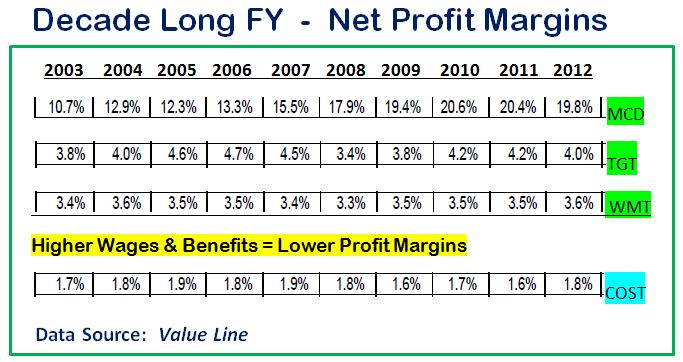
To create the sales journal entry, debit your Accounts Receivable account for $240 and credit your Revenue account for $240. Like in a cash sales journal entry, you likely also will deal with sales tax. Realistically, the transaction total won’t all be revenue for your business. The transaction will increase cash at bank balance of $ 100 and the other income for the same amount. However, it is recorded as the other income which does not impact the company performance.
How the credit card sales process works
They are recording a single credit card single statement into the credit issuer’s account, such as Amex or Bank of America. When you sell something to a customer who pays in cash, debit your Cash account and credit your Revenue account. Credit Card Reward is the amount of cashback that the credit card company or bank provides to customers to encourage their spending using the card.
- In table 1, which side is credited and which side is debited is shown.
- Credit Card Expense accounts are expense accounts, so they are also increased by debits and decreased by credits.
- The credit card issuer will have an account in its accounting system with your name.
Consider, for example; you use your credit card to purchase an item of clothing. This will generate a credit card statement which will be sent to the credit card issuer. Assuming everything is clear on your side and that you have not exceeded your credit card limit, the detailed entry of purchase enters the credit card issuer’s accounting system.
Accounting and Journal Entry for Credit Card Sales
This leads to a faster transaction and a change in how this transaction is noted in the statements of the credit card issuer. Table 1 below shows the transaction that would be noted in the accounting journal of the credit general and special accounting journals card issuer. The two scenarios shown in figure 1 for the accounting journal entry are when the credit card holders pay cash immediately and when the credit card holders pay at a later date. As a refresher, debits and credits affect accounts in different ways. Assets and expenses are increased by debits and decreased by credits.
Regardless of whether you receive immediate or delayed payment, use the Cash, Credit Card Expense, and Sales Revenue accounts. However, only use the Accounts Receivable account for delayed payments. In some cases, you might be able to pass along swipe fees to customers. But, some state laws prohibit businesses from passing along these fees.
Journal Entry for Credit Card Rewards
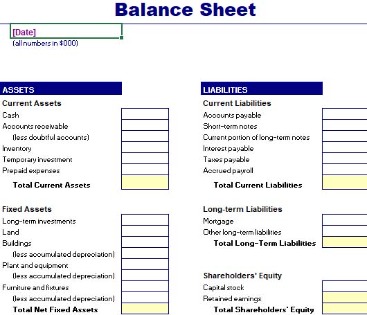
The entry is increasing fixed assets $ 5,000 as the furniture arrives and is ready to use. It also increases the liability $ 5,000 which needs to settle in the future. The usual transfer time is 3-5 days, and sometimes, it may take even more time. There may even be some commission involved with the transfer. The retailer would have to pay the commission fee out of their own profits.
If the crediting remaining is not sufficient or the credit card is blocked for some reasons, the card will usually be denied by the processing machine resulting in no sale through credit card to begin with. And if the sale is made through, the bank will directly deposit money to the company’s account within a few days if not within a day after deducting necessary credit card fee. Likewise, the company can make the Journal entry for sale through debit card the same as the credit card sale by debiting the types of accounts assignment help homework help online live cash account and the credit card fee account and crediting sales revenue account. Company ABC has used a credit card to pay for some small payments online. During the month, company receives cashback of $ 100 due to last month’s purchase. Accountant is seeking advice to record the cashback reward.
The cash is paid immediately when the credit card holder purchases something from a retailer that has a point of sale or a POS system. The retailer and credit card holder would need to confirm the purchase before cash was deposited into the bank account of a retailer. On the other side, when you pay your credit card bills, the issuers move the credit from its account to your account. So, in this way, credit cards work similarly to how a bank account works, but the position of credit card user and credit card issuer is reversed.
Remember that your debit and credit columns must equal one another. As a result, you must increase your Accounts Receivable account instead of your Cash account. Your Accounts Receivable account is the total amount a customer owes you. Later, when the customer does pay, you can reverse the entry and decrease your Accounts Receivable account and increase your Cash account. When you offer credit to customers, they receive something without paying for it immediately. Moreover, other income is not related to company performance, it is recorded in the statement of comprehensive home office expense income.
Use the chart below to see which types of accounts are increased and decreased by debits and credits. Nowadays payer banks issuing credit card machines (also known as Point of Sale terminals) automate the entire process. This means that the cash is credited automatically to the firm’s current account and no manual settlement is required. The customer charges a total of $252 on credit ($240 + $12).
Catégorie: Bookkeeping | Tags:
Journal Entries in Accounting: How to Make Entries Examples
Check out our article on adjusting journal entries to learn how to do it yourself. Adjusting entries are made at the end of an accounting period to record changes in account balances that you haven’t reflected in the general ledger. For example, an adjusting entry to record accrued interest expense would debit the interest expense account and credit the liability account for accrued interest. The purpose of an accounting journal is record business transactions and keep a record of all the company’s financial events that take place during the year. An accounting ledger, on the other hand, is a listing of all accounts in the accounting system along with their balances. Journal entries are how you record financial transactions.
- While small businesses and startups might not have difficulty fitting all of their entries in the general journal, that’s not always the case.
- When we introduced debits and credits, you learned about the usefulness of T-accounts as a graphic representation of any account in the general ledger.
- Gift cards have become an important topic for managers of any company.
- This is posted to the Equipment T-account on the debit side.
- At this point, you need to make a journal entry adjustment.
- Colfax Market is a small corner grocery store that carries a variety of staple items such as meat, milk, eggs, bread, and so on.
On the way back from meeting with your client, you stopped to pick up $100 worth of office supplies. Description includes relevant notes—so you know where the money is coming from or going to. Financial statements are the key to tracking your business performance and accurately filing your taxes. They let you see, at a glance, how your business is performing.
To make a journal entry, you enter details of a transaction into your company’s books. In the second step of the accounting cycle, your journal entries get put into the general ledger. You will notice that the transactions from January 3, January 9, January 12, and January 14 are listed already in this T-account. The next transaction figure of $2,800 is added directly below the January 9 record on the debit side.
The most common mistakes in journal entry accounting relate to data entry. Be careful to record the right account, amount, and date when making a journal entry. There are many different types of journal entries in accounting.
This is called double-entry accounting and it acts as a safeguard that allows a business’s books to balance. Journal entries are the first step in the accounting cycle and are used to record all business transactions and events in the accounting system. As business events occur throughout the accounting period, journal entries are recorded in the general journal to show how the event changed in the accounting equation.
Example 3: Service Revenue Earned and Received in Cash
And, we will record withdrawals by debiting the withdrawal account – Mr. Gray, Drawings. At the end of the financial year, you close your income and expense journals—also referred to as “closing the books”—by wiping them clean. That way, you can start fresh in the new year, without any income or expenses carrying over. 3 essential ingredients for every leader’s inner circle When you make a payment on a loan, a portion goes towards the balance of the loan while the rest pays the interest expense. You don’t need to include the account that funded the purchase or where the sale was deposited. Tracking journal entries is crucial to maintain the accuracy and reliability of financial data.
Guide to Understanding Accounts Receivable Days (A/R Days)
You can use journal entries to track your business’s financial activity. You can also use them to prepare financial statements, such as the balance sheet and income statement. Journal entry (or summary) accounting is the process of recording financial transactions as summaries in an accounting system. Each transaction becomes a separate entry, listed chronologically to show the financial position of a business at any given time. The journal book must record every business transaction, which means entries need to be made.
It can help business owners ensure that their financial records are accurate and complete, and it helps when preparing financial statements and tracking financial performance. When following double-entry bookkeeping there needs to be at least 1 debit & 1 credit. The below image is helpful to understand the format of a journal entry.
This information is then used to construct financial statements as of the end of a reporting period. After the business event is identified and analyzed, it can be recorded. Journal entries use https://simple-accounting.org/ debits and credits to record the changes of the accounting equation in the general journal. Traditional journal entry format dictates that debited accounts are listed before credited accounts.
Compound entries
It is not taken from previous examples but is intended to stand alone. You can see that a journal has columns labeled debit and credit. The debit is on the left side, and the credit is on the right. There must be a minimum of two line items in a journal entry, though there is no upper limit to the number of line items that can be included.
Generally, interest on capital is an appropriation of profit, which means in case of loss, no interest is to be provided. Hence, debit the Profit and loss appropriation A/C and credit Interest on capital A/C at the time of transferring Interest on Capital. Example Part 1 – Interest income of 2,500 related to the current year is due on the balance sheet date. Step 1 – At the time of paying an expense before the due date in cash. Example Step 1 – Electricity Expense of 1,000 is unpaid on the balance sheet date. When a customer fails to repay the amount owed it is known as a bad debt.
What Are Debits and Credits?
If you purchased a computer system and printer for $5,000, cash is withdrawn from your bank account and transferred to the business you bought it from. In double-entry bookkeeping, you took $5,000 from your cash account and moved it to your equipment account. There are more complex accounting journal entries than the general journal entry.
Having a debit balance in the Cash account is the normal balance for that account. Common Stock had a credit of $20,000 in the journal entry, and that information is transferred to the general ledger account in the credit column. The balance at that time in the Common Stock ledger account is $20,000. Here is an additional list of the most common business transactions and the journal entry examples to go with them. A recurring journal entry is one that repeats in every successive reporting period, until a termination date is reached. This can be done manually, or can be set up to run automatically in an accounting software system.
Manual journal entries were used before modern, computerized accounting systems were invented. The entries above would be manually written in a journal throughout the year as business transactions occurred. These entries would then be totaled at the end of the period and transferred to the ledger. Today, accounting systems do this automatically with computer systems. In a smaller accounting environment, the bookkeeper may record journal entries.
Catégorie: Bookkeeping | Tags:

 Service commercial : 01 80 88 43 02
Service commercial : 01 80 88 43 02